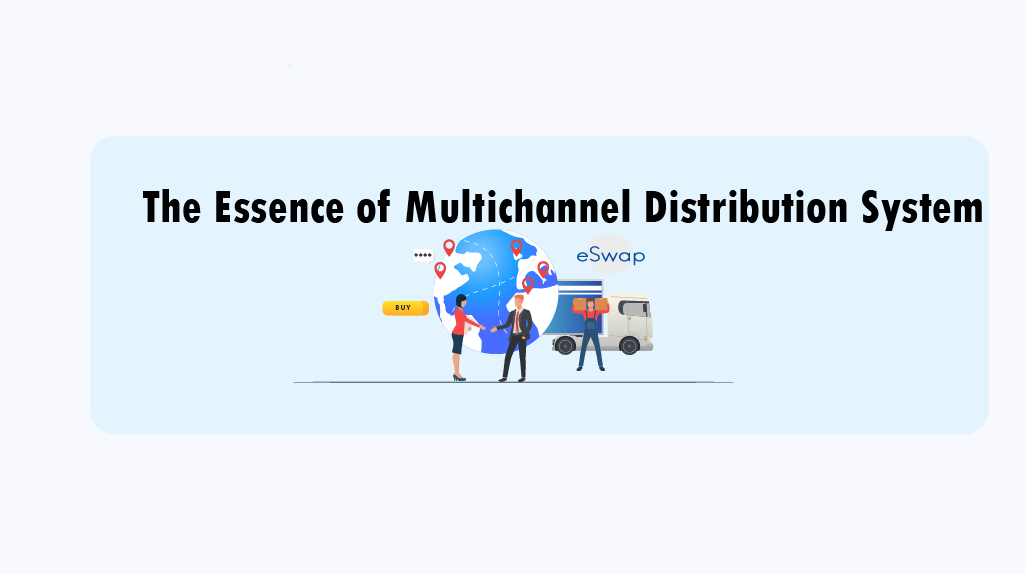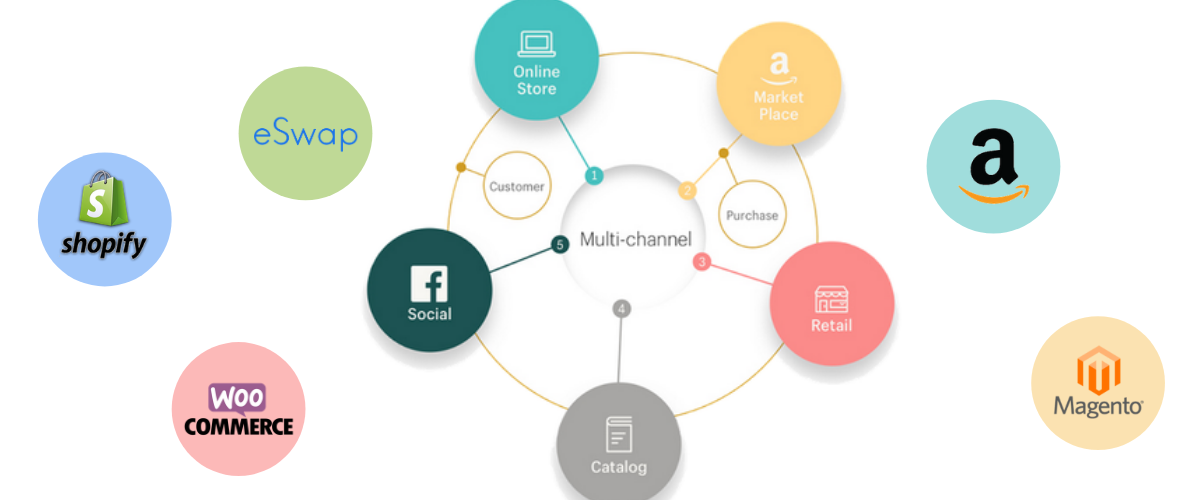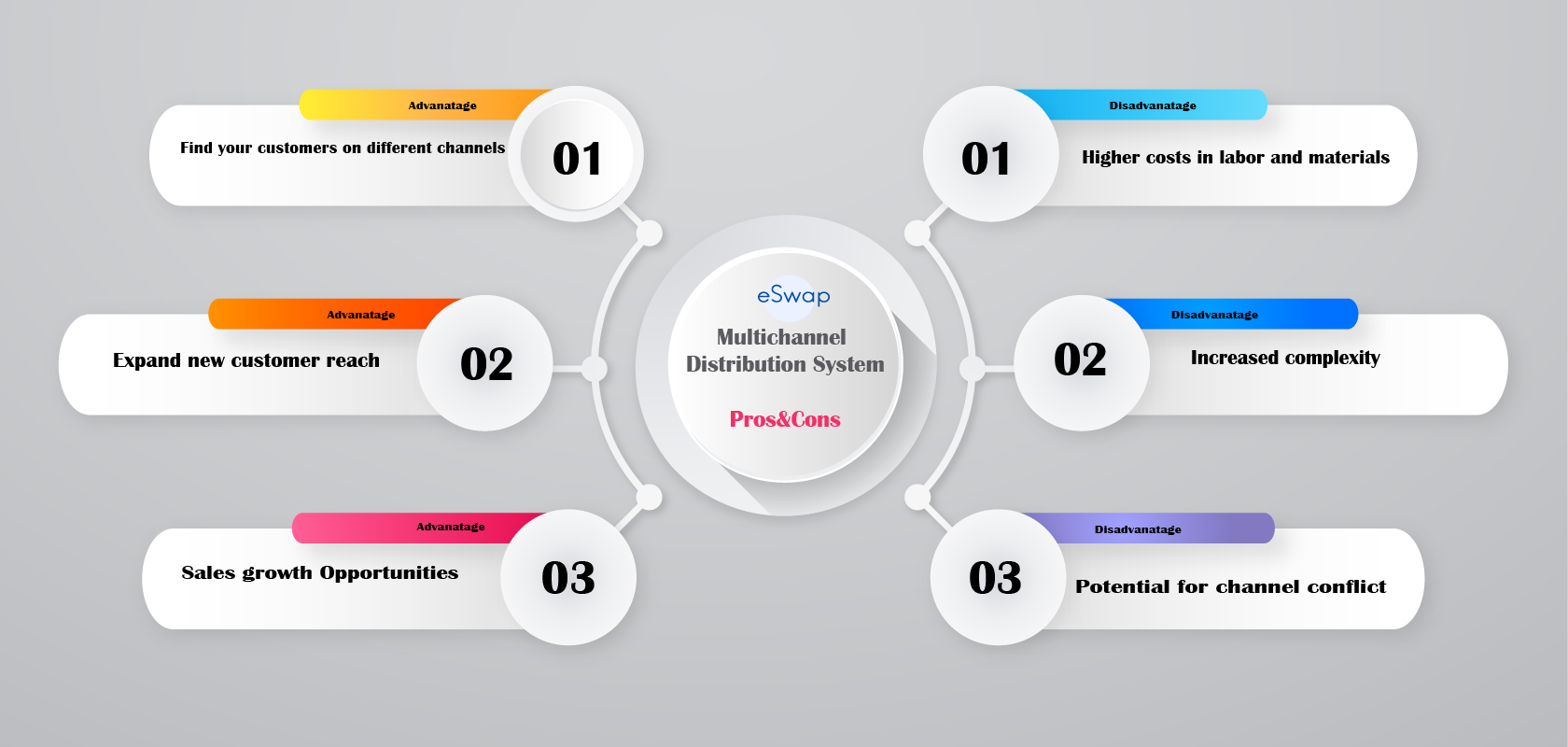Introduction
With the outbreak of digital technologies, the means of selling and buying, that’s to say the behaviour of customers and sellers have changed. Buyers have become more demanding, so to be competitive, the sellers start to look for different methods – more innovative than the traditional ones. Thus the clear distinction between the single-channel and multi-channel distribution systems appears.

The majority of businesses started their career from having one brick-and-mortar shop or one online channel. With the one channel to manage, they had one stock, one outlet and one market. Running this kind of business, they used the single-channel distribution method. When starting a business one of the main goals you want to achieve is enlarging it. The time flows, and after successfully running your business on one channel, soon you want to grow. You start to look for other possible variants. And hence here you come across the multichannel distribution. Let us view all the aspects of multichannel distribution system:
- What is multichannel distribution,
- Definition for multichannel distribution,
- Advantages and disadvantages of multichannel distribution systems.
- Examples of multichannel distribution,
Before coming to the main point of multichannel distribution, let us view some main and commonly used channels of distribution. We present the list below.
- Sales branches
- Stationary trade (physical stores)
- Ambulant trade (street vendors, mobile )
- Catalogue/mail-order business
- Teleshopping
- Internet/online shopping
- Mobile shopping (the keystone of multichannel marketing)

What is a multichannel distribution system?
The meaning of the process can become clear even by analyzing the word multichannel itself (many channels). The multichannel distribution system is a way (method) when one businessman or a company owns two or more sales channels, as well as distribution designs. In other words, if a person sells items and delivers them not only from one “store” but several others.
The definition of the multichannel distribution system
When using several channels, you, as a seller, have the opportunity of reaching a more comprehensive range of customers. As for the businesses, this gives them the chance to get more profit, constant and equal development of channels. This strategy suggests to customers different ways of getting the same product. As a result, the customer becomes more informed and is given the freedom to choose the best suitable option.
One of the American marketing authors Philip Cotler has defined this process as a communication approach that companies use intending to reach people possible to become clients at the same time on different platforms. This can be done through ads, products, services. The whole process results in finding out about the company and its offers, as well as having people buy goods and have communication with the company.

Advantages of the multichannel
Today, having at least one online store in addition to the main (brick-and-mortar) store has become usual (if not necessary). But besides one online platform, the clients (even the most dedicated) are looking for diversity of platforms. They shop on different channels looking for the most convenient. So if you don’t want to lose – be present on other platforms.
If viewed in long-term prospect, this strategy should have increased sales as its aim. With the use of the multichannel approach, you show your customers your flexibility. This means that they become more satisfied and loyal. The number of your potential clients reach depends on the number of your channels. Thus, your company can obtain a firm position in the field and become highly competitive. If pointing the main advantages, we see you can do the followings:
- find your customers on different channels
- expand new customer reach
- have sales growth
Disadvantages of the multichannel
Anyone starting the multichannel system should realize that with the number of channels, the responsibility grows as well. Management and logistics require more efforts. Another issue to take into account is your brand and the corporate image. People should know and recognize it, whichever platform they use. One more important thing is for you as a seller. If you use one sales channel, it is always easy to keep track of it. While with different channels, it becomes challenging. Here we can mention our platform opportunities.
eSwap gives the chance to merge all your channels on the platform, keep track them, do everything from one place. Whether you need to see the inventory condition or order statuses, you can just keep control of all the elements of your e-commerce through only one user-friendly platform. You can discover all the features, as well as get the help needed.
Coming back to the disadvantages of the multichannel distribution system, we can mention the followings:
- You can “lose” your brick-and-mortar store
- You can hardly manage to keep up with all your channels (Do not be afraid: here our platform is a generous helping tool to you)
Examples of multichannel distribution
You can find prominent examples of multichannel distribution in the retail area, especially B2C. Many business holders set up online business simultaneous to the offline. Online stores can be of greater use than selling goods only in an offline space. For example, if you can’t sell some items in a physical shop can be sold online with a lowered price on sale. Some more channels are email and phone. You can send newsletters, use the technique of cold calling. The customers will get informed and feel special.
Speaking of multichannel, of course, we should talk mostly about multichannel e-commerce. One of the mega-successful examples of multichannel distribution can be Apple with its various products. It supports brick-and-mortar stores throughout the world, offers online shopping through the official website. Besides, this corporation cooperates with billions of retailers, who provide the same products on their platforms. The retailers in their turn, can have online stores on top e-commerce platforms like Amazon, eBay, Shopify, Woocommerce and others. For the retailers working on these and other platforms, we also suggest using eSwap – multichannel inventory management software. This is a perfect software to keep everything in order when using a multichannel distribution system.







